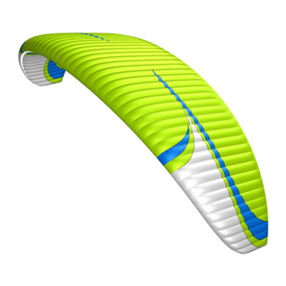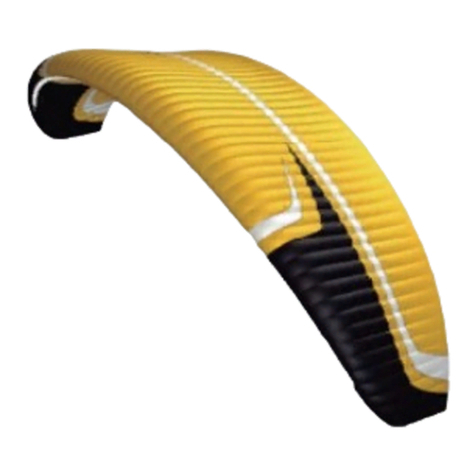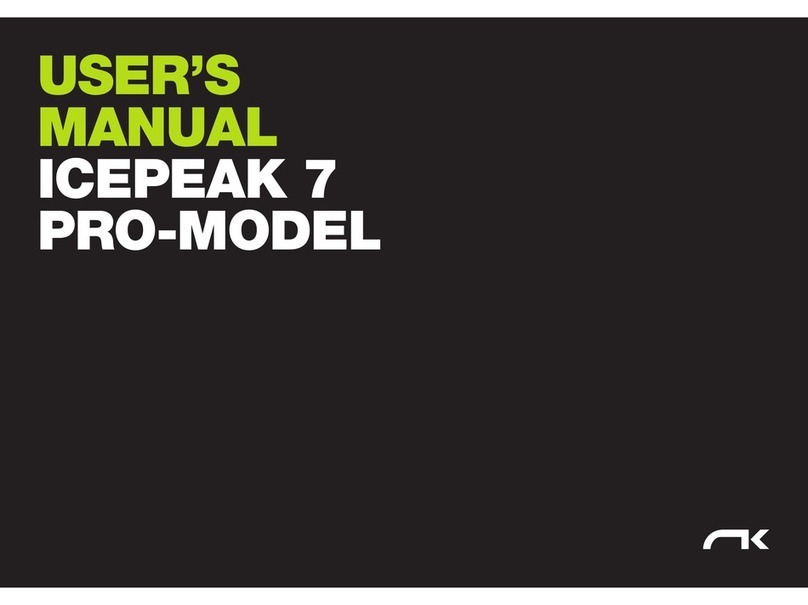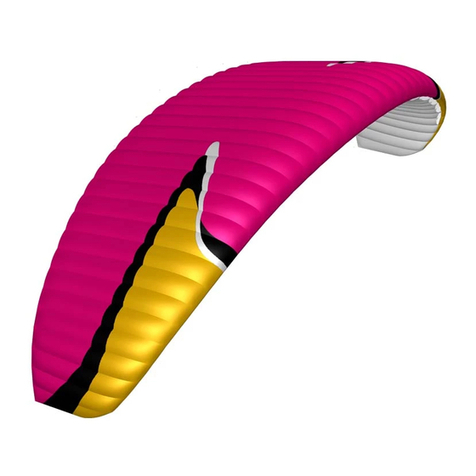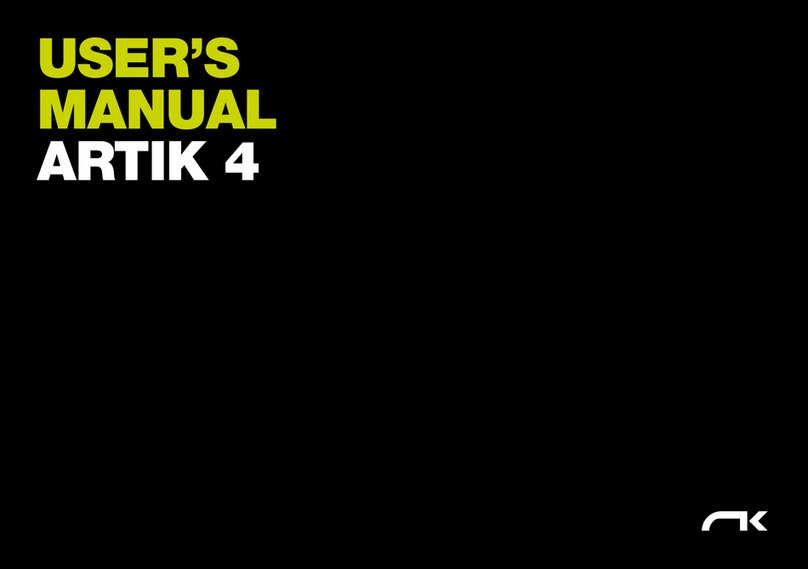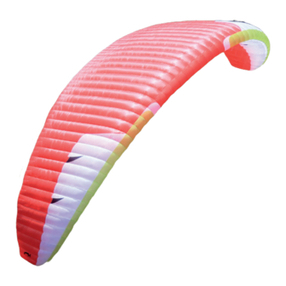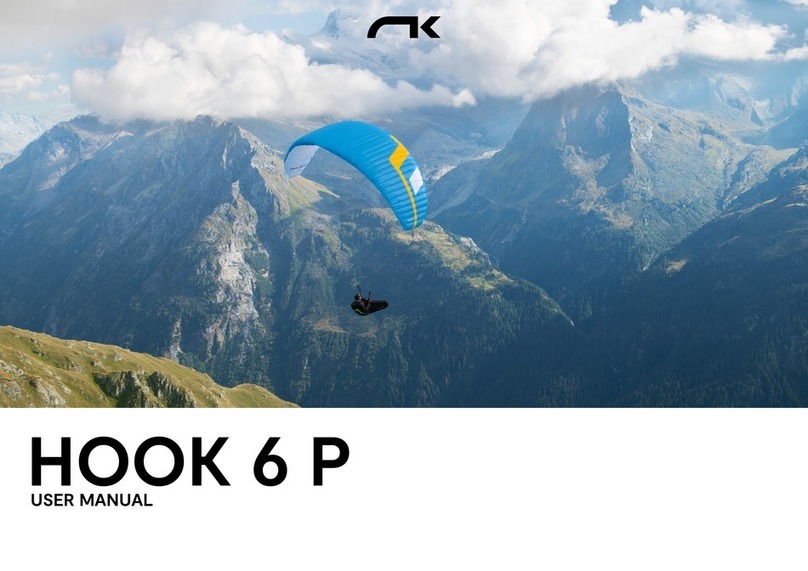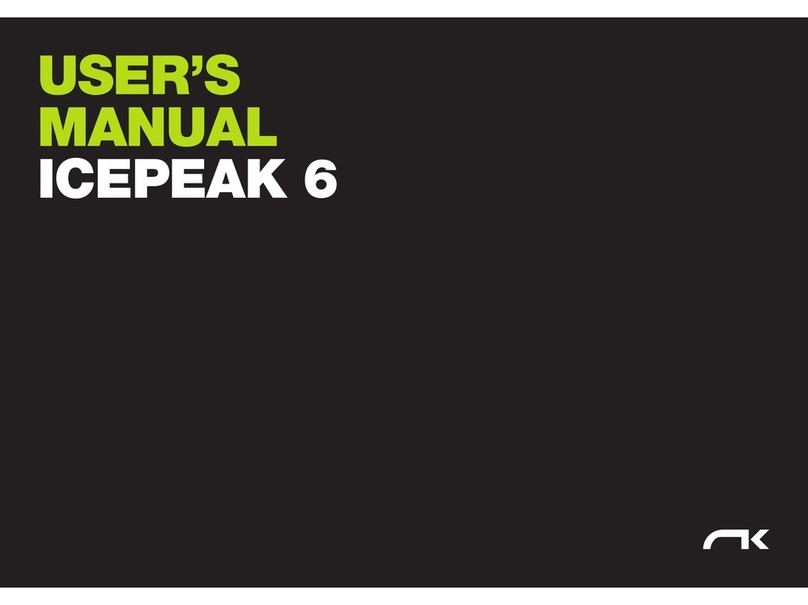9
keep the wing under control. The pilot should stop braking to regain the
necessary air speed after a correction was made.
Do not maintain any toggles tension for longer than necessary or it would
cause the wing to enter a dangerous ying conguration. Make prompt,
precise yaw, pitch and roll adjustments when necessary to re-establish
normal air speed.
4.2 POSSIBLE CONFIGURATIONS
To become familiar with those manoeuvres, we recommend practicing
under the supervision of a qualied certied paragliding instructor. The
pilot will have to constantly adapt his toggle input relative to the load
carried by the wing, and avoid over-steering.
It is important to realize that from one size to the next, glider
behaviourcan vary, even under the same size wing: depending on
minimum or maximum loading.
Asymmetrical collapse
In spite of the KOYOT 3’s prole stability, strong turbulent air may
cause the wing to collapse asymmetrically if the pilot was unable to
predict the glider’s reactions in specic circumstances. When the wing
is about to experience an asymmetric collapse, the brake lines will
slacken and transmit a tension loss affecting the harness stability. To
prevent the collapse from happening, pull the toggle corresponding to
the compromised side of the wing. It will increase the incidence of the
wing (angle of attack). If the collapse does happen, the KOYOT 3 will
not react violently, the turning tendency is gradual and easily controlled.
Weight-shift toward the ying and opposite side of the collapse to keep
the wing on ying straight while applying a light brake pressure to that
side if necessary to slow it down. The collapsed side of the wing should
then recover and reopen by itself. If it does not, then pull the toggle on
the collapsed side decisively and quickly all the way down before bringing
it back up immediately. You may have to repeat this pumping action to
provoke the re-opening of the deated glider side. Do not over-brake or
slow down the ying side of the wing (risk of a stall for having too high
an angle of attack). Once the collapsed side is open, re-centre your body
under the wing to regain the default ying speed.
Symmetrical collapse
In normal ying conditions and due to the KOYOT 3 design, asymmetrical
collapses are unlikely to take place. The wing’s prole has great buffering
abilities when dealing with extreme incidence changes. A symmetrical
collapse may occur in strong turbulent conditions, entering or exiting
powerful thermals or when lacking experience using the accelerator/
speed-bar with untimely inadequate input. Symmetrical collapses usually
re-inate without the glider turning, but a symmetrically applied quick
braking action with a quick deep pump will accelerate the re-ination if
necessary. Release the brake lines immediately to return to default glider
air speed.
Negative spin
A negative spin does not conform to the KOYOT 3’s normal ight
behaviour. Certain circumstances however, may provoke this
conguration such as trying to turn when ying at very low air speed deep
in the brakes, and applying even more toggle pressure on one side). It is
not easy to give any specic recommendation about this situation other
than quickly restoring the wing’s default air speed and angle of attack by
progressively reducing the tension on the brake lines. The normal wing
reaction will be to have a lateral surge on the re-accelerated side with a
rotation not greater than 360º before returning to default air speed and a
straight ight path trajectory.
Parachutal stall
A parachutal stall takes place when the wing remains fully inated but
loses forward motion to then drop vertically at an accelerated rate.
Instability and a lack of pressure on the brake lines set in, although the
canopy would appear to be correctly inated. To regain normal air speed,
release brake line tension symmetrically and push forward on the ‘A’

